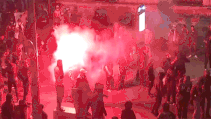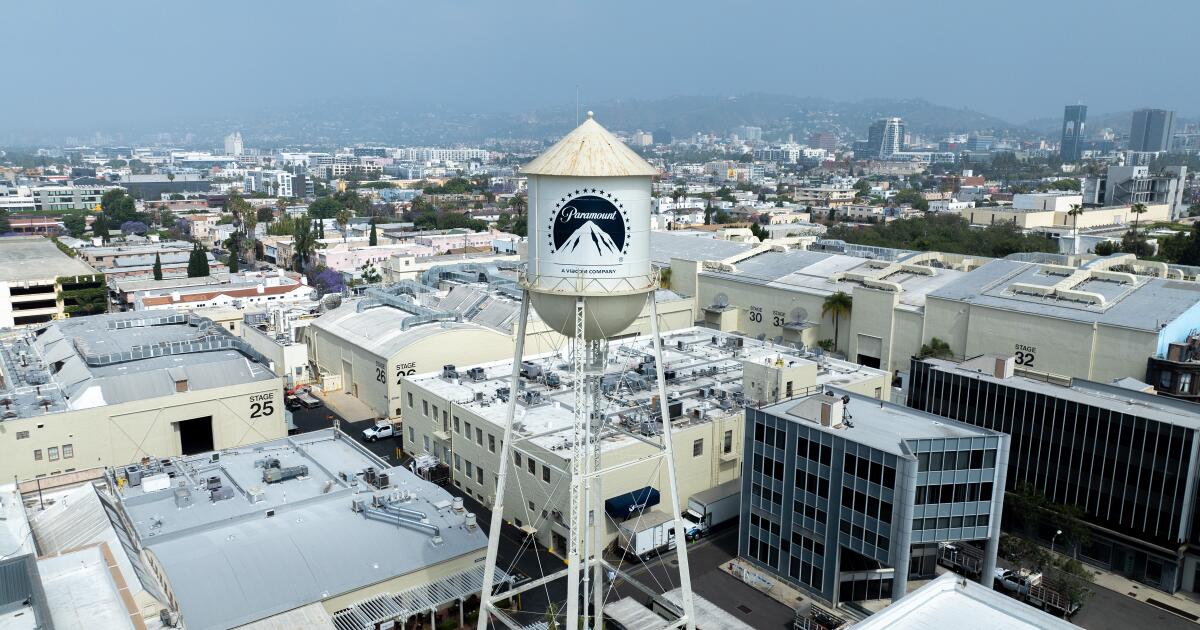Science
U.S. Seeks to Block Recovery of Titanic Artifacts

In late 1985, weeks after the shattered remains of the R.M.S. Titanic came to light, officials in Washington began seeking legal authority to regulate access to the famous shipwreck as part of a memorial to the more than 1,500 passengers and crew members who had lost their lives in 1912. Congress called for a global accord, as the wreck lay in international waters. Until then, Congress declared, “no person should physically alter, disturb, or salvage the R.M.S. Titanic.”
As nations debated a draft agreement, American salvors moved in. Over the years, thousands of artifacts have been retrieved, including a top hat, perfume vials and the deck bell that was rung three times to warn the ship’s bridge of a looming iceberg.
Now, the federal government is taking legal action to assert control over who can recover artifacts from the storied liner and, potentially, to block an expedition planned for next year. The move comes as the Titan submersible disaster of June 18 raised questions about who controls access to the ship’s remains, which lie more than two miles down on the North Atlantic seabed. The legal action is also notable because it pits the legislative and executive branches of government against the judicial branch.
Last Friday, in a federal court in Norfolk, Va., two U.S. attorneys filed a motion to intervene in a decades-old salvage operation. The Virginia court specializes in cases of shipwreck recovery and in 1994 granted exclusive salvage rights to RMS Titanic, Inc., which is based in Atlanta, Ga. The company has retrieved many artifacts from the ship and set up a number of public exhibitions.
The company won the salvage rights after the French-American team that discovered the Titanic in 1985 made no recovery claims.
The federal government is now seeking to become a party to the salvage case and block any expedition it deems objectionable. It claims the legal right to have the Secretary of Commerce and its maritime unit, the National Oceanic and Atmospheric Administration, or NOAA, approve or deny permission to RMS Titanic whenever “the company” seeks the court’s permission to conduct more artifact recoveries.
“This has been a long time coming,” said Ole Varmer, a retired lawyer for NOAA who specializes in shipwreck conservation. The federal government, he added, “has been forced to intervene as a party and ask the court to enforce these laws.”
RMS Titanic plans to fight the federal action. “The company believes it retains the right to continue to conduct salvage activities at the wreck site, without seeking or obtaining approval from any third-parties other than the U.S. District Court which maintains jurisdiction over the wreck site,” Brian A. Wainger, a lawyer for RMS Titanic, said in a statement.
Legal experts say the litigation could go on for years, because of the high financial stakes for the company as well as fundamental issues involving international accords and how the branches of the American government relate to one another on legal matters. The case, they say, could eventually go to the Supreme Court.
“It’s a really interesting question,” said John D. Kimball, a partner at Blank Rome, a law firm in Manhattan, who teaches maritime law at New York University. “It’s an attempt by the government to enforce treaty provisions and goes to the question of who has authority over the wreck site. The issues are tricky and the rulings are likely to be appealed.”
For ages, maritime law ruled that finders were keepers. A wreck’s discoverer, in other words, could expect to win possession of much, if not all, of the cargo and treasure. The Titanic case became a modern example of that old principle in action.
In parallel, slowly and at times painfully, the federal government moved to exert its authority over the Titanic salvage case. As directed by Congress, the State Department entered into negotiations with Canada, France and the United Kingdom to draft an international accord. In 2017, Congress enacted legislation to carry out the agreement. It prohibits “any research, exploration, salvage, or other activity that would physically alter or disturb the wreck or wreck site of the R.M.S. Titanic unless authorized by the Secretary of Commerce.”
In late 2019, as France and Canada sat on the sidelines, the accord entered into force between the United States and the United Kingdom.
A test case arose in 2020, when RMS Titanic announced it would seek to recover the Marconi wireless telegraph from the ship, famous for transmitting its distress calls. U.S. attorneys filed a legal challenge in the Virginia court, but the coronavirus pandemic cut short the proceedings and the planned expedition.
This year — on June 13, five days before the Titan submersible disaster took the lives of five people descending to view the Titanic wreck — the company again told the court that it planned to recover the Marconi telegraph, and to do so without seeking federal approval.
Friday’s filings in the Virginia court by U.S. attorneys Jessica D. Aber and Kent P. Porter renewed the battle over who controls access to the world’s most famous shipwreck. RMS Titanic, a U.S. filing said, “must comply” with the federal implementing legislation for the international accord and seek permission from the Commerce Department for any recoveries.
The company’s refusal to comply with the law, the filing continued, “irreparably harms” the United States, because it impairs Washington’s ability to implement the global accord and prevents it “from fulfilling its legal obligations under federal law.”
The company has yet to file a response, and the court has yet to hand down a ruling on the federal motion to intervene in the salvage case.

Science
LAX passenger arrested after running onto tarmac, police say

A Los Angeles International Airport passenger was arrested early Saturday morning after he became irate and ran out of Terminal 4 onto the tarmac, according to airport police.
The passenger appeared to be experiencing a mental health crisis, said Capt. Karla Rodriguez. “Police responded and during their attempt in taking the suspect into custody, a use of force occurred,” she said.
The man, who was not identified, was arrested on suspicion of battery against a police officer and trespassing on airport property, she said. He was taken to a nearby hospital for a mental health evaluation.
A video obtained by CBS shows a shirtless man in black shorts running on the tarmac past an American Airlines jetliner with a police officer in pursuit. The officer soon tackles the man and pushes him down on the pavement.
Science
Video: How SpaceX Is Harming Delicate Ecosystems

On at least 19 occasions since 2019, SpaceX’s operations have caused fires, leaks and explosions near its launch site in Boca Chica, Texas. These incidents reflect a broader debate over how to balance technological and economic progress against protections of delicate ecosystems and local communities. The New York Times investigative reporter Eric Lipton explains.
Science
Live poultry markets may be source of bird flu virus in San Francisco wastewater

Federal officials suspect that live bird markets in San Francisco may be the source of bird flu virus in area wastewater samples.
Days after health monitors reported the discovery of suspected avian flu viral particles in wastewater treatment plants, federal officials announced that they were looking at poultry markets near the treatment facilities.
Last month, San Francisco Public Health Department officials reported that state investigators had detected H5N1 — the avian flu subtype making its way through U.S. cattle, domestic poultry and wild birds — in two chickens at a live market in May. They also noted they had discovered the virus in city wastewater samples collected during that period.
Two new “hits” of the virus were recorded from wastewater samples collected June 18 and June 26 by WastewaterSCAN, an infectious-disease monitoring network run by researchers at Stanford, Emory University and Verily, Alphabet Inc.’s life sciences organization.
Nirav Shah, principal deputy director of the U.S. Centers for Disease Control and Prevention, said that although the source of the virus in those samples has not been determined, live poultry markets were a potential culprit.
Hits of the virus were also discovered in wastewater samples from the Bay Area cities of Palo Alto and Richmond. It is unclear if those cities host live bird markets, stores where customers can take a live bird home or have it processed on-site for food.
Steve Lyle, a spokesman for the state’s Department of Food and Agriculture, said live bird markets undergo regular testing for avian influenza.
He said that aside from the May 9 detection in San Francisco, there have been no “other positives in Live Bird Markets throughout the state during this present outbreak of highly-pathogenic avian flu.”
San Francisco’s health department referred all questions to the state.
Even if the state or city had missed a few infected birds, John Korslund, a retired U.S. Department of Agriculture veterinarian epidemiologist, seemed incredulous that a few birds could cause a positive hit in the city’s wastewater.
“Unless you’ve got huge amounts of infected birds — in which case you ought to have some dead birds, too — it’d take a lot of bird poop” to become detectable in a city’s wastewater system, he said.
“But the question still remains: Has anyone done sequencing?” he said. “It makes me want to tear my hair out.”
He said genetic sequencing would help health officials determine the origin of viral particles — whether they came from dairy milk, or from wild birds. Some epidemiologists have voiced concerns about the spread of H5N1 among dairy cows, because the animals could act as a vessel in which bird and human viruses could interact.
However, Alexandria Boehm, professor of civil and environmental engineering at Stanford University and principal investigator and program director for WastewaterSCAN, said her organization is not yet “able to reliably sequence H5 influenza in wastewater. We are working on it, but the methods are not good enough for prime time yet.”
A review of businesses around San Francisco’s southeast wastewater treatment facility indicates a dairy processing plant as well as a warehouse store for a “member-supported community of people that feed raw or cooked fresh food diets to their pets.”
-

 World1 week ago
World1 week agoTension and stand-offs as South Africa struggles to launch coalition gov’t
-

 Politics1 week ago
Politics1 week agoFirst 2024 Trump-Biden presidential debate: Top clashes over issues from the border to Ukraine
-

 News1 week ago
News1 week ago4 killed, 9 injured after vehicle crashes into Long Island nail salon
-

 News1 week ago
News1 week agoSupreme Court denies Steve Bannon's plea to stay free while he appeals
-

 News1 week ago
News1 week agoVideo: How Blast Waves Can Injure the Brain
-

 Politics1 week ago
Politics1 week agoTrump says 'biggest problem' not Biden's age, 'decline,' but his policies in first appearance since debate
-

 Movie Reviews1 week ago
Movie Reviews1 week agoMovie review: A Quiet Place, quivering since Day One
-

 News1 week ago
News1 week agoIncreasing numbers of voters don’t think Biden should be running after debate with Trump — CBS News poll














